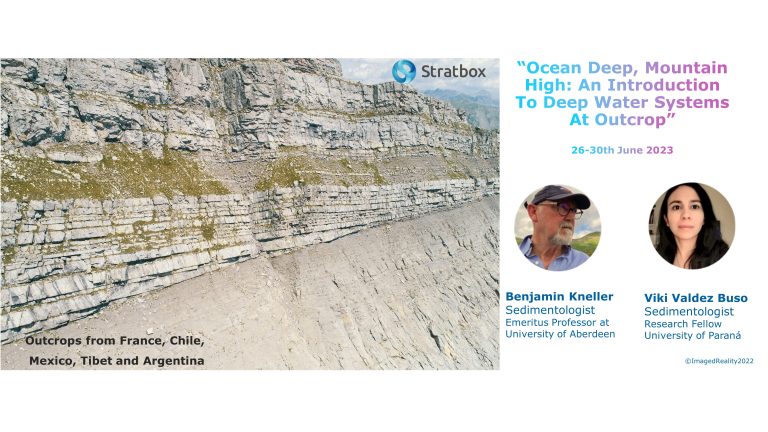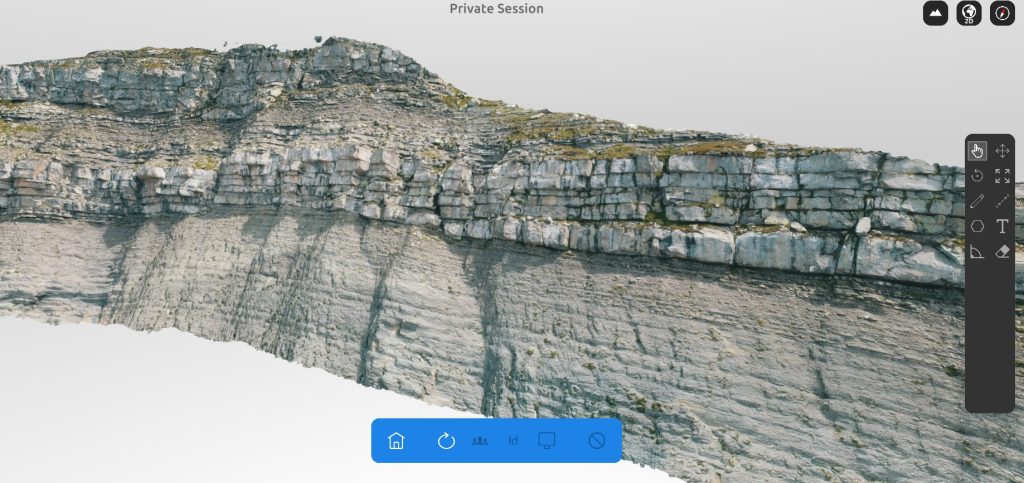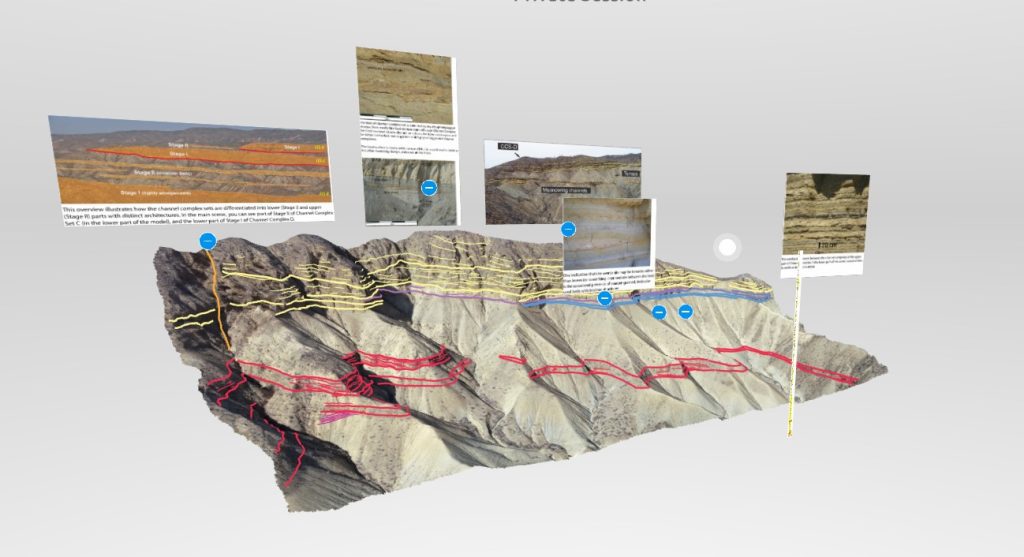Ocean Deep, Mountain High: Deepwater Short Course and Virtual Fieldtrip

Format and Duration:
Virtual Instructor-led Course – 5 half-day sessions
13:00 – 17:00 (London / GMT)
Dates:
Monday 26 to Friday 30 June 2023
(registration closing date: June 16th)
Pricing:
2,000 GBP
Course Overview
Deepwater depositional systems in the subsurface are amongst the most important containers for fluids of all kinds — hydrocarbon reserves, sequestered CO2, stored methane and hydrogen, and water. Their complexity, variability, and the sub-seismic scale of many of the features that govern fluid flow within them underscore the importance of outcrop analogues, which have formed the basis of most of the models that are used to predict reservoir performance.
This course covers the range from background oceanographic factors and deep-water processes through to seismic workflows for the practitioner, including detailed treatment of depositional systems and architectures. Participants will be guided through and interpret 3D outcrop models, derived from drone data, with examples from large (kilometre-scale) channel levee systems in Chile, Tibet and Mexico, and sheet/lobe systems in France, Chile, and Argentina. We will explore ranges in scale from detail of reservoir architecture up to that of entire channel systems, 3D architecture, and its temporal/stratigraphic evolution, overall architecture of sheet systems, their onlap/pinch-out relations and implications on reservoir connectivity.
Learning on the 3D outcrop models will be interspersed with sessions that will set the scene for deep water depositional systems including background processes, basics of sediment gravity flows, and turbidites and related facies; and also, to give the larger context on initiation mechanisms for sediment gravity flows, external controls on deep water systems, and seismic mapping workflows. We will also discuss some examples of producing field analogues.


Learning Outcomes
Understanding the broad-scale reservoir architectures of deep-water systems;
Developing an appreciation for the complexity and variability of deep-water systems;
- Channel- leveed systems: architectures, scales, variability, reservoir property distribution (N:G, poro-perm), uncertainty in subsurface interpretation.
- Sheet systems: variability, architectures, facies control on reservoir property distribution, uncertainty in subsurface interpretation, confinement.
- Mass Transport Deposits (MTDs): scales, architecture, seal properties, and supra topography accommodation.
Course Content Overview
The course will be organised into six sessions, illustrating various elements of deep-water systems, drawn from a wide range of outcrop examples that the instructors have studied worldwide.
- Slope channel system 1: Mexico.
- Slope channel system 2: Chile
- Slope channel system 3: Tibet
- Lobe and sheet complex: Argentina
- Turbidite system dip profile: France
- Mass transport deposits and ponded turbidites: Argentina
The first three sessions deal with the complexity and architectural diversity of various deep-water channel systems, illustrating the distribution of reservoir and non-reservoir facies.
The fourth session deals with sheet-like systems, and addresses the differences between unconfined lobes and confined sheets. We discuss the distinction between confinement at seismic scale and bed scale, the impact that this has on reservoir scale architectures, and the degree to which these might be differentiated in wells.
In the fifth session we will look at a dip profile of a deep-water system that includes a range of different elements, building on experience from the previous four sessions.
Lastly, session six deals with mass transport deposits and supra-MTD topography, discuss short-wavelength vs long-wavelength topography, and the related accommodation that the topography provides for ponded (confined) turbidites.
Although the course is predominantly based around the outcrops, each session will begin with a short introductory presentation of background material. The sessions will also include interpretation exercises to highlight the architectural differences within and between the different systems.
Training Method
The course will be delivered using Stratbox – a multi-user, interactive, virtual remote collaboration platform for Geoscience, developed by Imaged Reality.
Who Should Attend
This course is intended for all those involved in
deep-water exploration and development.

Instructors
Ben Kneller is an Emeritus Professor of Geology at the University of Aberdeen, UK, Professor in the Institute for Sedimentary Geology at the Chengdu University of Technology, and Visiting Professor at Zhejiang University in China. He acquired his PhD in 1988, and prior to coming to Aberdeen, he has previously worked at the universities of Sheffield, Liverpool, Leeds and University of California at Santa Barbara. He worked with industry as lead investigator in Joint Industry Projects for 30 years, has published over 100 papers, and supervised 35 PhD students.
Victoria Valdez Buso is a Research Fellow at UFPR (Brazil), an honorary research fellow at the University of Aberdeen (UK), an Associate Editor of Sedimentology (IAS), and an Executive Editor of Sedimentologika. She has experience in the architecture of deep-water systems including lobes, splays, and confined/ponded sandstone sheets; channel fills and their overbanks; mass transport deposits (MTDs) and their impact on reservoir development. With field experience on deep-water outcrops in Argentina, Brazil, Chile, China, (Qinghai Province and Tibet), France, Spain, and Mexico (Baja California).


